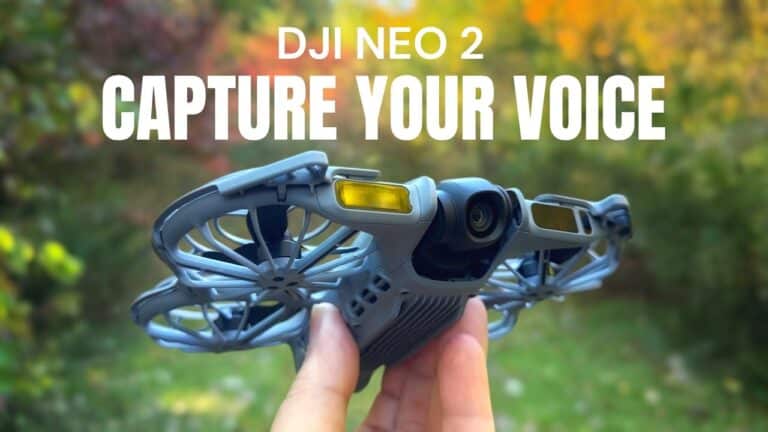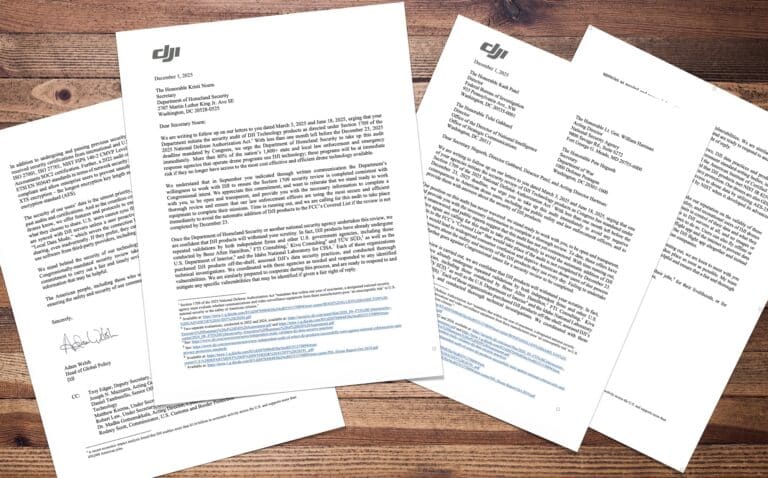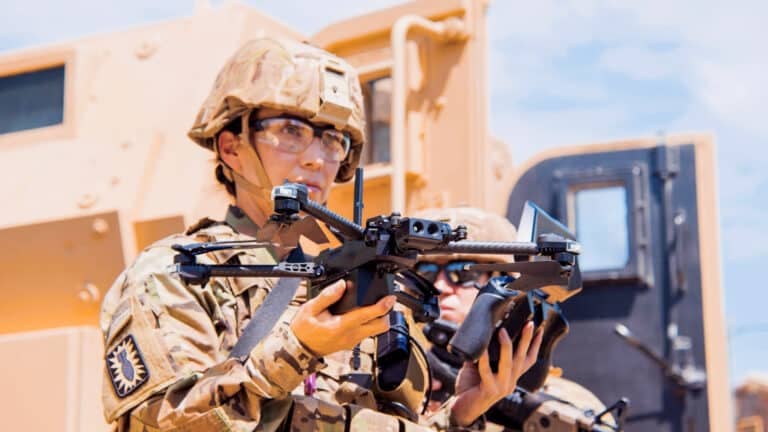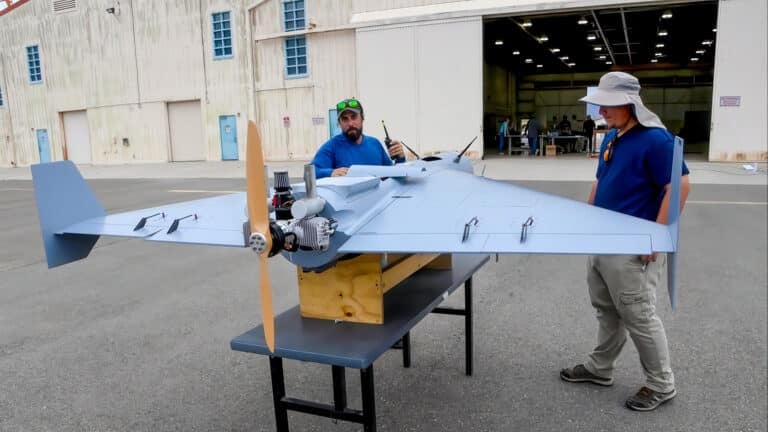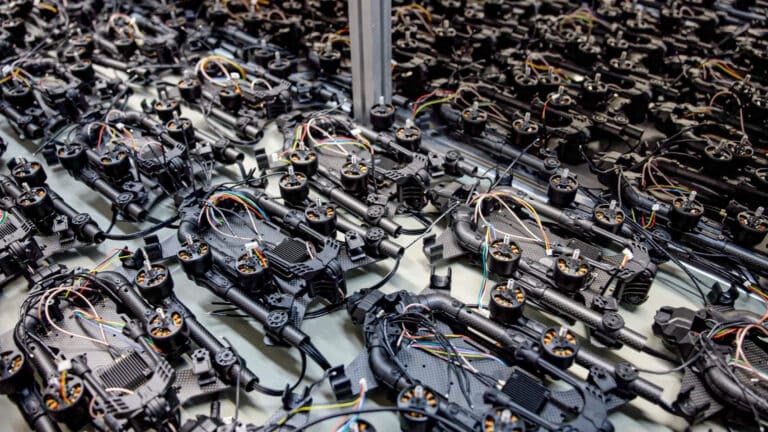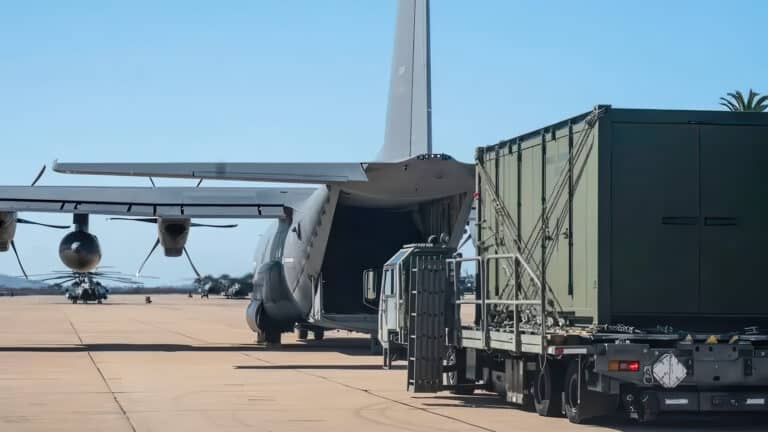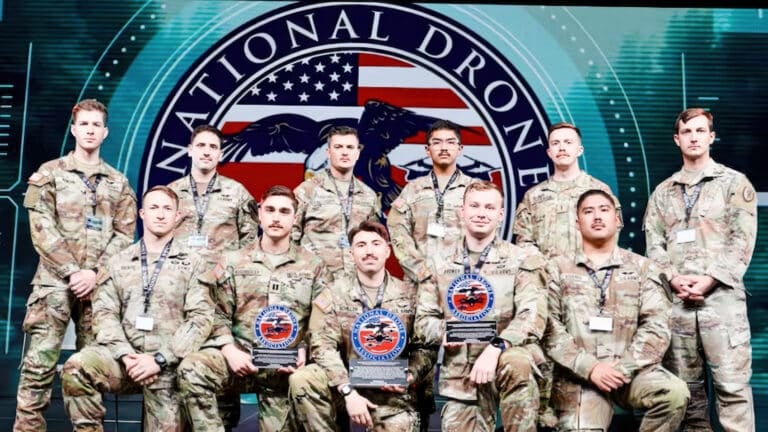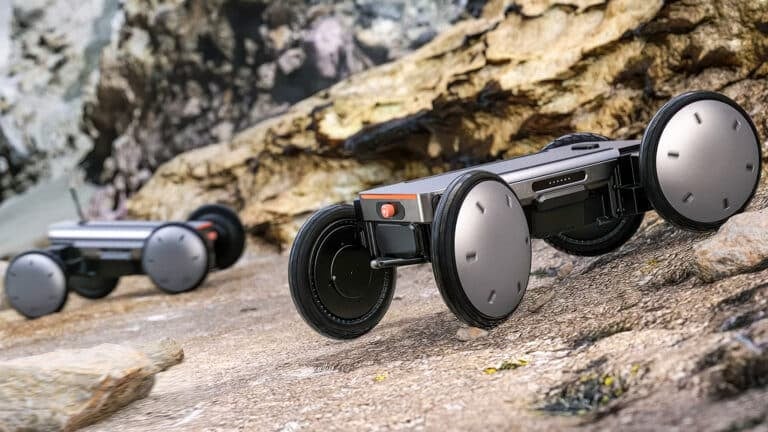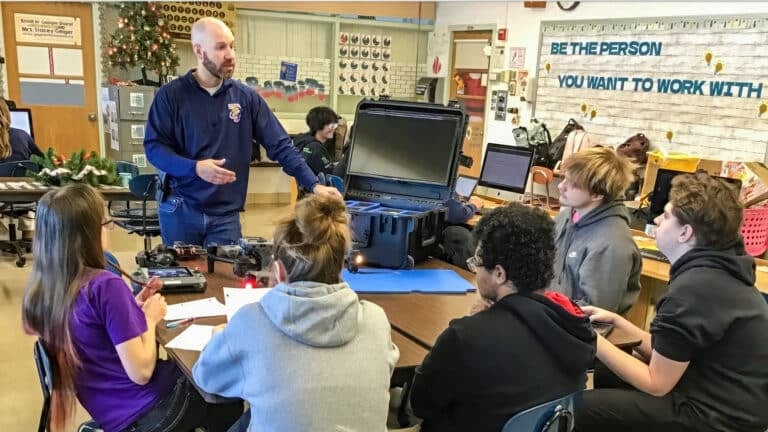UC Researchers Build Moth-Like Drone That Hovers Without AI or GPS
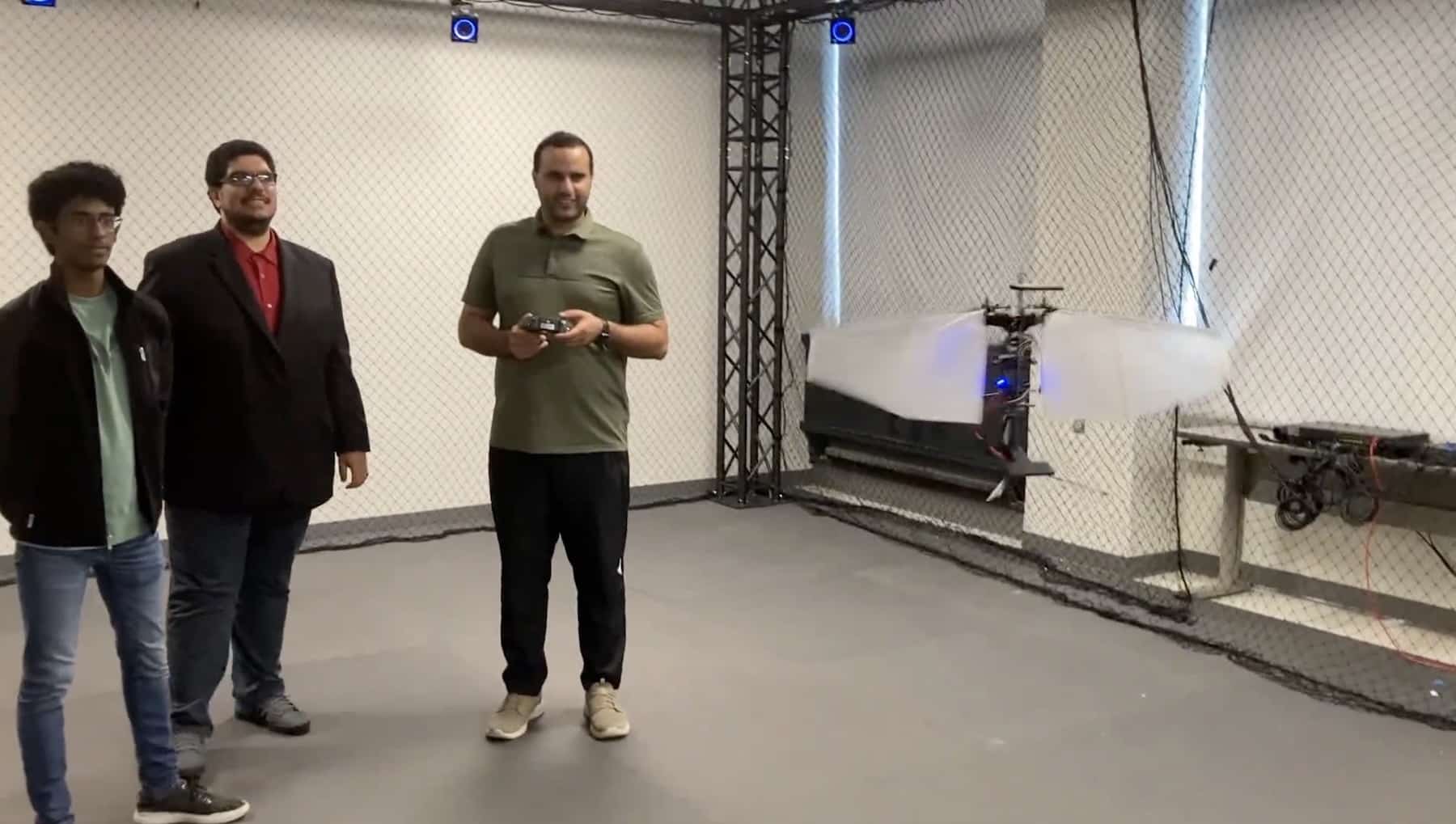
Amazon Drone Deals: DJI Mini 5 Pro Fly More Combo with DJI RC2 now for $1,099!
University of Cincinnati researchers have developed a moth-inspired flapping-wing drone that navigates autonomously using simple light sensors and feedback algorithms—without requiring artificial intelligence, GPS, or complex computing power.
The breakthrough could revolutionize miniature drone design for covert surveillance applications. Instead of relying on heavy processors and advanced AI systems, the drone mimics how hovering insects fly using brains the size of pollen grains.
Extremum-Seeking Control Replaces Artificial Intelligence
Assistant Professor Sameh Eisa and doctoral student Ahmed Elgohary theorized that hovering insects use the equivalent of extremum-seeking feedback systems. Published in the journal Physical Review E, their research demonstrates how these systems enable real-time drone navigation through constant adjustments to control inputs like wing-flapping frequency.
“Our simulations show that extremum-seeking control can naturally reproduce the stable hovering behavior seen in insects—without AI or complex models,” said Elgohary, the study’s lead author. “It’s a simple feedback, model-free and real-time principle that could explain how these small creatures achieve such agility with very limited brainpower.”
The drone simultaneously measures its performance—such as finding a light source—to correct its course in a constant feedback loop. This approach allows remarkably consistent and stable flight without the computational overhead of traditional autonomous systems.
Four-Winged Design Mimics Multiple Hovering Insects
The flapper drone features four wings made of wire and fabric that flap independently to control roll, pitch, and yaw. The wings move so fast—12 times per second—that they blur like a hummingbird’s wings to the naked eye.
Testing proved the stability of this approach. The drone successfully matched the unique back-and-forth sway patterns of moths, bumblebees, dragonflies, hoverflies, craneflies, and hummingbirds.
The intentional wobble serves a critical purpose. These perturbations provide the feedback the system needs to evaluate performance changes and constantly course-correct for optimal flight.
“Moths make it look easy,” Eisa said. “The reason we use extremum-seeking techniques is because they seem to be biologically plausible.”
Hovering insects like the nectar-loving hummingbird clearwing moth move their wings in a unique figure-eight motion that generates lift on both the downstroke and upstroke. The flexible wings deform during each wing beat to maximize lift and maneuverability.
Covert Surveillance at Insect Scale
The research focuses on flapping-wing drones because of their highly efficient flight, which can be scaled down for covert surveillance applications.
“The reason we’re interested is size. It’s a more optimal design. These small robots would have to fly like a moth,” Eisa explained.
Graduate student Rohan Palanikumar demonstrated the drone using a remote controller in Eisa’s flight lab, which is surrounded by soft netting to protect both drones and people from crashes. Manual control proved much harder and less reliable than the drone’s own extremum-seeking system.
Once activated, the flapper drone lifted into the air and hovered in place—albeit with a calculated wobble that actually improves its performance.
Implications Beyond Drone Technology
The research carries significance beyond autonomous aerial vehicles. It may explain how tiny insects manage their miraculous aerobatics with brains the size of a grain of pollen.
“It could change a lot of things about biophysics. If it is the case that hovering insects like moths use the equivalent of our extremum-seeking feedback, it probably evolved in other creatures as well,” Eisa said.
Eisa’s Modeling, Dynamics and Control Lab explores animal-inspired engineering across multiple projects. He previously examined drones that could harness dynamic soaring to cover vast distances efficiently, much like albatrosses—work that recently earned a $700,000 DARPA grant.
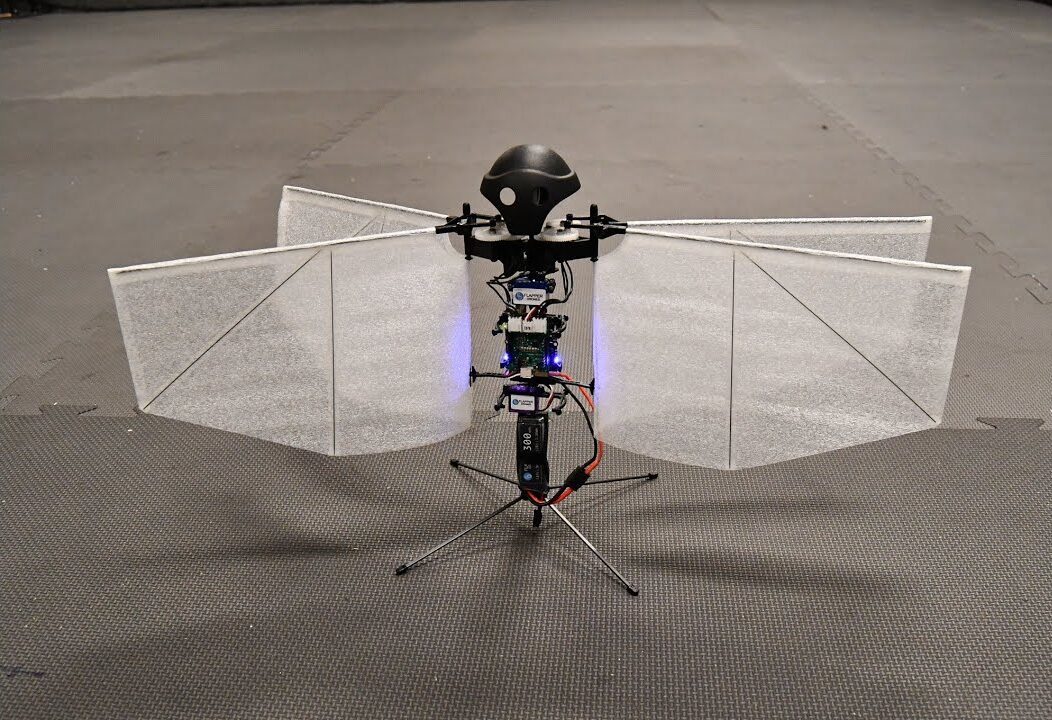
DroneXL’s Take
The University of Cincinnati team has achieved something remarkable by looking backward to nature rather than forward to more complex AI. While the drone industry races to pack more processing power into smaller packages, these researchers asked a different question: How do moths hover with virtually no computing power at all?
The answer—extremum-seeking feedback—isn’t new technology. It’s a control theory concept that’s been around for decades. What’s new is recognizing that nature has been using this “model-free” approach for millions of years of evolution.
This has immediate practical implications for miniature surveillance drones where every gram matters. Battery-powered AI processors are heavy. Simple feedback systems based on light sensors are not. For applications requiring insect-scale flight—whether military reconnaissance or environmental monitoring—this moth-inspired approach could finally make truly tiny autonomous drones practical.
The broader significance might be even more interesting. If hovering insects really do use extremum-seeking control, we’re not just copying nature—we’re finally understanding it. That opens questions about what other “simple” biological systems might inspire breakthroughs in robotics, from swarm behavior to collision avoidance.
DroneXL has covered several bio-inspired drone projects recently, from RoboFalcon 2.0’s bird-like flight to PigeonBot II’s use of real feathers. The UC moth drone stands out because it’s not just mimicking the mechanics of flight—it’s replicating the control strategy. That’s a fundamentally different approach to biomimicry, and potentially a more powerful one.
What do you think? Share your thoughts in the comments below.
Discover more from DroneXL.co
Subscribe to get the latest posts sent to your email.
Check out our Classic Line of T-Shirts, Polos, Hoodies and more in our new store today!

MAKE YOUR VOICE HEARD
Proposed legislation threatens your ability to use drones for fun, work, and safety. The Drone Advocacy Alliance is fighting to ensure your voice is heard in these critical policy discussions.Join us and tell your elected officials to protect your right to fly.
Get your Part 107 Certificate
Pass the Part 107 test and take to the skies with the Pilot Institute. We have helped thousands of people become airplane and commercial drone pilots. Our courses are designed by industry experts to help you pass FAA tests and achieve your dreams.

Copyright © DroneXL.co 2025. All rights reserved. The content, images, and intellectual property on this website are protected by copyright law. Reproduction or distribution of any material without prior written permission from DroneXL.co is strictly prohibited. For permissions and inquiries, please contact us first. DroneXL.co is a proud partner of the Drone Advocacy Alliance. Be sure to check out DroneXL's sister site, EVXL.co, for all the latest news on electric vehicles.
FTC: DroneXL.co is an Amazon Associate and uses affiliate links that can generate income from qualifying purchases. We do not sell, share, rent out, or spam your email.






